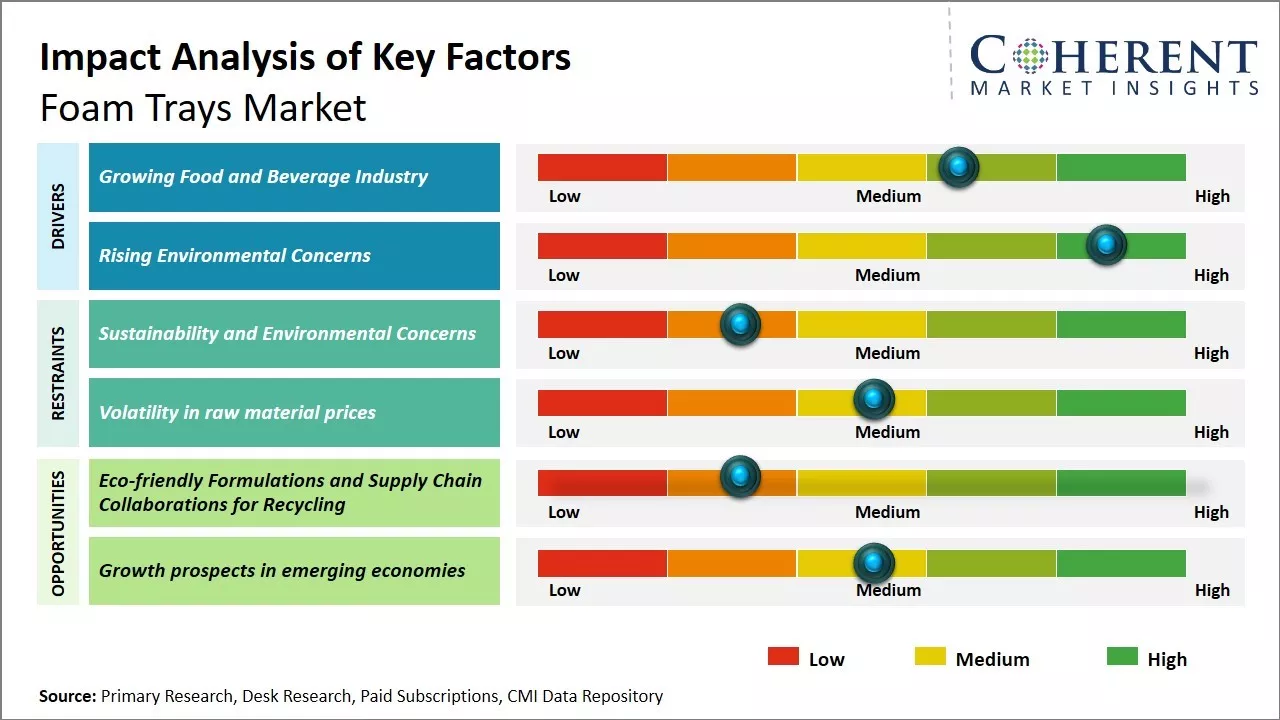The foam trays market is estimated to be valued at USD 3.68 Bn in 2025 and is expected to reach USD 4.75 Bn by 2032, growing at a compound annual growth rate (CAGR) of 3.7% from 2025 to 2032.

To learn more about this report, Request sample copy
Foam trays are widely used across various end-use industries like food and beverages, pharmaceutical, and personal care and cosmetics industries. The foam trays market is expected to witness positive growth over the forecast period. Rising demand for packaged and ready-to-eat food products is driving the need for effective packaging solutions. Foam trays have emerged as a sustainable and eco-friendly alternative to plastic and polystyrene trays. Furthermore, the ability of foam trays to maintain freshness and minimize product wastage are increasing its adoption across industries.
Growing Food and Beverage Industry
The food and beverage industry has been witnessing significant growth over the past few years with evolving consumer preferences and growing disposable income levels. People are increasingly opting for convenient packaging solutions for food products that allow ease of cooking, reheating, storing and transportation. Foam trays have emerged as one of the most popular packaging formats used in the foodservice industry owing to their lightweight and durable properties. They help protect foods from external elements and potential damage during transportation. Moreover, plastic foam offers excellent insulation which helps maintain the quality and temperature of foods. With the expansion of the QSR sector and demand for ready-to-eat meals rising, foam trays are being extensively used for packaging cooked and semi-cooked food items. The growing consumption of packaged snacks and dry foods has also created a considerable demand from the snacks segment. Food processing companies are actively incorporating foam trays in their packaging mixes to tap growing demand from consumers leading to market growth, therefore, the growing food industry is expected to drive the market growth. For instance, according to data published by Invest India in 2022, by 2025 the Indian food processing market is estimated to reach US$ 535 Bn, growing at a compound annual growth rate of 15.2%.
Joining thousands of companies around the world committed to making the Excellent Business Solutions.
View All Our Clients